WE (L) COME BACK TO ALBEROBELLO
Undisputed capital of the trulli in the gorgeous Valle d’Itria. Though it is the only town in Puglia where you'll see a constant flow of tour buses. There is an impressive array of tourist tat on show - most trulli are souvenir shops. If you are desperate to add a trullo to your snow globe collection, you have come to the right place. But dig a little deeper, away from the crowds of the rione Monti, and it is still possible to discover a little authenticity...

How to get there
Driving is the quickest and easiest way to get to Alberobello as public transport options are limited. The journey through the heart of the Valle d’Itria via Ostuni, Cisternino and Locorotondo is especially rewarding. A trulli link direct bus service from Bari takes 1h5m. Other services involve multiple changes, from Monopoli, Polignano a Mare etc..

Trulli scrumptious
Making the most of your trip to Alberobello. No need to plan your trip to avoid the crowds. Manage your expectations and after following the crowds, discover a little patch of secret Alberobello away from the commercialised rione Monti trulli zone.

Food and drink
Hot dogs and hamburgers headline the menus of restaurants on the main thoroughfare of Largo Martellotta. Yet not too far away is one of our favourite restaurants with amazing (and innovative) pizza and wonderful Pugliese pucce.
One trullo, two trulli ... Alberobello, a UNESCO world heritage centre, is home to more than 1,500 of these strange circular dwellings with conical roofs, evidence of a long-forgotten past heritage.
Built from dry stone and white-washed some have cones painted with symbols the provenance of which is shrouded in mystery (or open to debate).
The Big Guide to Alberobello

The Trulli of Alberobello | UNESCO World Heritage Centre
“The trulli, typical limestone dwellings of Alberobello in the southern Italian region of Puglia, are remarkable examples of corbelled dry-stone construction, a prehistoric building technique still in use in this region. These structures, dating from as early as the mid-14th century, characteristically feature pyramidal, domed, or conical roofs built up of corbelled limestone slabs. Although rural trulli can be found all along the Itria Valley, their highest concentration and best preserved examples of this architectural form are in the town of Alberobello, where there are over 1500 structures in the quarters of Rione Monti and Aja Piccola.
The property comprises six land parcels extending over an area of 11 hectares. The land parcels comprise two districts of the city (quarters or Rione Monti with 1,030 trulli; Rione Aia Piccola with 590 trulli) and four specific locations (Casa d’Amore; Piazza del Mercato; Museo Storico; Trullo Sovrano)”.
From the UNESCO World Heritage Centre list.



The Thing About Alberobello
Think of Puglia and you will probably picture Alberobello’s trulli - as iconic as Polignano a Mare’s Lama Monachile - and just as likely to grace the cover of the latest edition of The Lonely Planet Guide to Puglia.
Although they feature across the Itria Valley, it is the concentration of trulli found in Alberobello that makes it unique. The majority are found in two separate districts (“rione”): the rione Monti meanders up and around Via Monte San Michele, San Gabriele and San Marco; on the other side of Largo Martellotta around Via Giuseppe Verdi is the calmer rione Aia Piccola.

Drawing a stream of visitors all year round tourism takes centre stage in Alberobello. Most trulli in the crowded commercialised Monti district are shops; those that are not are restaurants.
Gaudy trulli-come-gift shops display tourist trinkets outside every other doorway. Owners urge passers-by inside to buy overpriced pasta, olive oil, linen and made in China trulli snow globes.
Hamburgers and hot dogs headline the menus of restaurants along the Largo Martellotta. Vast canteen-like restaurants seat upwards of 350 diners to accommodate the bus tours of cruise liner passengers docked in Bari and Brindisi.




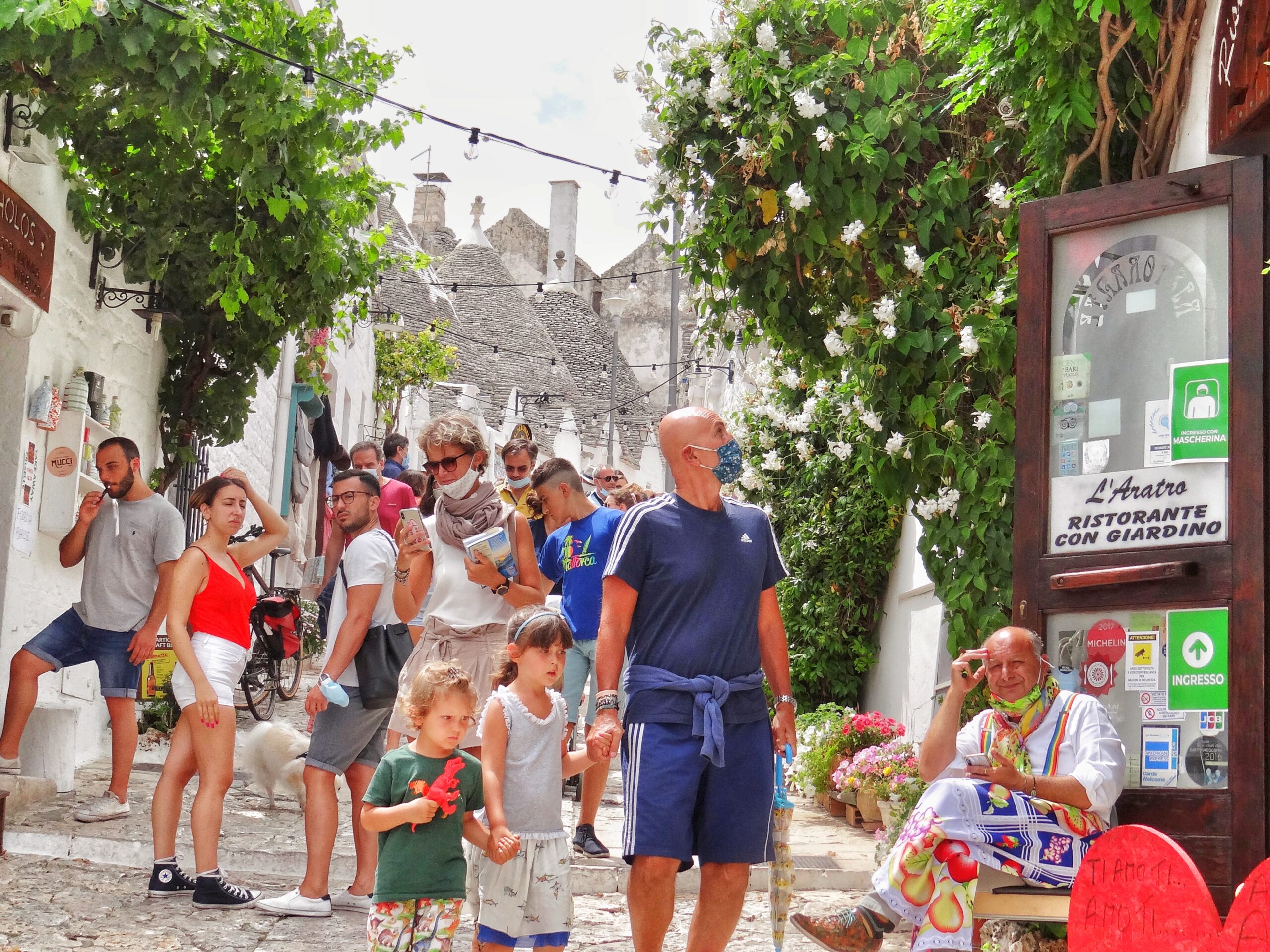
These days most Alberobello guides advise visitors to arrive before 9am ahead of the organised bus tours, or to wait until the evening once the crowds have gone. The Puglia forum on Tripadvisor still has a few diehard fans who speak of a “magical” experience to be had (though they acknowledge trying to manage your visit to avoid the crowds).
Whilst their enthusiasm is to be appreciated it overlooks that trulli are peculiar but not unique to Alberobello. Wonderful examples of beautifully restored trulli can be found all over the Valle d’Itria, often in more authentic settings.
Unprepared for the crowds and the commercialisation of Alberobello many visitors we speak to leave feeling underwhelmed - and sometimes even unimpressed. The authenticity and charm of a long gone way of life has all but evaporated.
Yet no trip to Puglia would be complete without visiting Puglia’s trulli. They are not unique to Alberobello. Indeed there are many beautiful examples around nearby Locorotondo and Cisternino.
Visit Responsibly
In recent years, Alberobello has been suffering from over-tourism, with visitors flocking to the town in increasing numbers. This has put a strain on the town's infrastructure, environment, and local community. To ensure that visitors can enjoy the beauty of Alberobello while supporting responsible and sustainable tourism, we suggest:
- Visit during the off-season: Alberobello is beautiful year-round, but it's especially crowded during the summer months. Visiting in the off-season, such as in the fall or winter, not only helps avoid the crowds but also supports local businesses during quieter times.
- Use public transportation: Parking in Alberobello can be challenging, so consider arriving there using the local train to reduce traffic congestion and air pollution. The train station is situated centrally.
We recommend staying in trulli in the countryside outside Alberobello. It is often cheaper
If you manage your expectations and forget the promise of a “magical” experience you can avoid being disappointed. You don’t even need to plan your trip around the busy crowds. No matter when you visit, if you know where to look you can still find a small part of the Alberobello that so inspired Italian film director and poet Pier Paolo Pasolini...
A Landscape Shaped by Nature and Tradition
Alberobello’s landscape is characterised by rolling hills, sinkholes, and terraces, shaped by ancient karstic erosion and tectonic activity. The unique geological structure of the area has provided the limestone used to build the town’s dry-stone walls and trulli, with "chiancarelle" for roofs and "chianche" for floors.
The region’s agricultural landscape reflects centuries of human adaptation. Once a vast oak forest, the land was transformed for cultivation, yet traces of the original woodland remain in scattered trees and groves. Notably, Quercus Trojana, a rare oak species native to the Balkans, can still be found here. The countryside is dotted with olive groves, almond orchards, vineyards, and historic stone structures, such as dry-stone huts and "specchie" (stone mounds)—evidence of medieval agricultural practices.
From Feudal Struggles to Independence
Alberobello’s history is intertwined with feudal oppression and resistance. Initially part of a woodland owned by the Acquaviva d'Aragona family, the area was settled in the late 16th century by people seeking refuge from debts and persecution. They built trulli using dry-stone techniques, a method encouraged by feudal lords as it allowed easy demolition to prevent permanent settlement.
By the 17th century, the village had forty round-based trulli, but its residents remained legally dependent on Noci. In 1630, Count Giangirolamo Acquaviva established the first infrastructure, including a mill, a bakery, and an inn, yet Alberobello remained an unofficial settlement. In 1797, after years of struggle, seven community representatives appealed to King Ferdinand IV, who granted Alberobello royal status, freeing it from feudal rule.
Pasolini’s Alberobello
Pier Paolo Pasolini demonstrated his attachment to Alberobello when writing in 1951:
"Maybe the masterpiece of Puglia is Alberobello, there is no tourist guide that ignores it, no geography book for middle schools that does not have photographs of its trulli ... Alberobello is a perfect town whose formula has become style in the rigor with which it has been applied.
... The trulli cluster in the sloping ground looks serene and pure, veiled by the narrow, winding streets that crawl its grotesque and exquisite architecture. The colours are rigidly white - a whitish and cold white, with a few blue stripes - and the black smoke. But every now and then in the irrefutable warp of this architecture ... opens a fracture where the emerald green and the orange of a garden fade.”
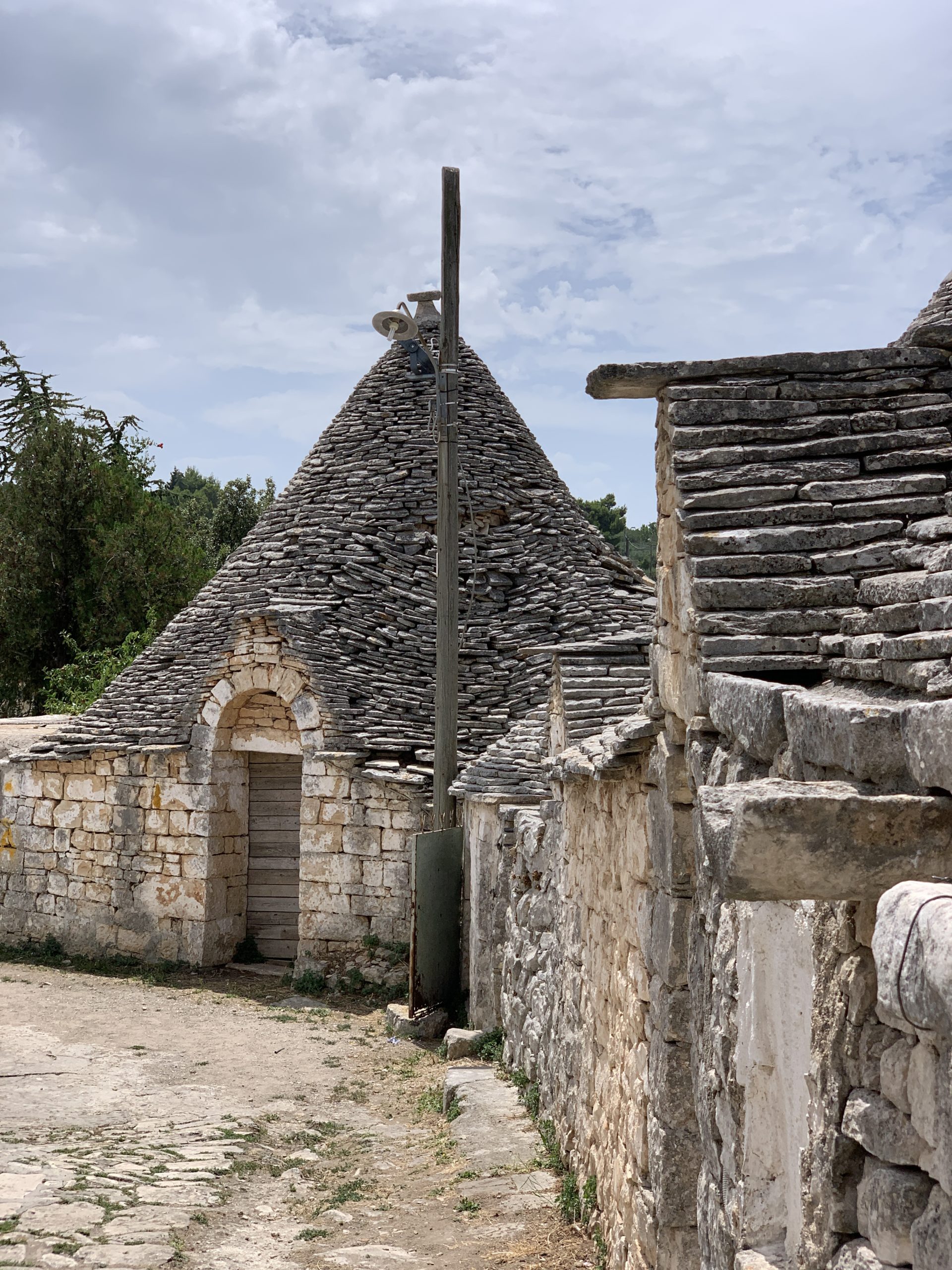


How to do Alberobello | Our suggestions
It’s your holiday and you should always take things at your own pace. But with so many wonderful destinations to visit in Puglia let us suggest how you can make the most of Alberobello.
Most tourist guides and commentators suggest arriving early to avoid the organised tour groups as Alberobello fills up by the bus load. To some extent trying to avoid negotiating the crowds is impossible, even by arriving early in the morning as more people take that advice on board. Besides, that is now part of the Alberobello experience.
Arrive when best suits you. Mid-morning or late afternoon - after 5pm - works for us. Our suggestion if you have your own transport is that you need no more than 2 hours, excluding lunch or dinner, to soak up all that is Alberobello.
Rione Monti | the over commercial main trulli district should not be ignored. Just remember although it is the heart of the trulli zone, it is no longer the soul. No need to amble - save that for later. Walk up Monte S. Michele, grab a coffee and delicious pastry at Martinucci Laboratory, via Monte S. Michele, 57. Cross over to Monte S. Gabriele and then onto Monte S. Marco.
Job done. You have seen what most visitors come to Alberobello to see.
Now cross over the Largo Martellotta and head up the steps towards Piazza XXVII Maggio and the rione Aia Piccola. The Aia Piccola district is less crowded, its restored trulli - mostly B&B accommodation - with characteristic original stonework intact. If you dig a little deeper you can discover a secret, hidden space offering a more intimate, close-up experience of Alberobello’s heritage.
Rione Aia Piccola | from Piazza XXVII Maggio head to Via Giuseppe Verdi and enjoy wandering around. If you have time take via Verdi all the way to via Colombo where you will see the splendid Villa Tria. Be sure to walk down Via Galileo Galilei and onto Vico il Duca degli Abruzzi. Keep going to discover some unrestored trulli in their original setting with some wonderful views through the pine trees over the white washed cone topped trulli of the rione Monti. In that instant you will find the Alberobello that inspired Pasolini.

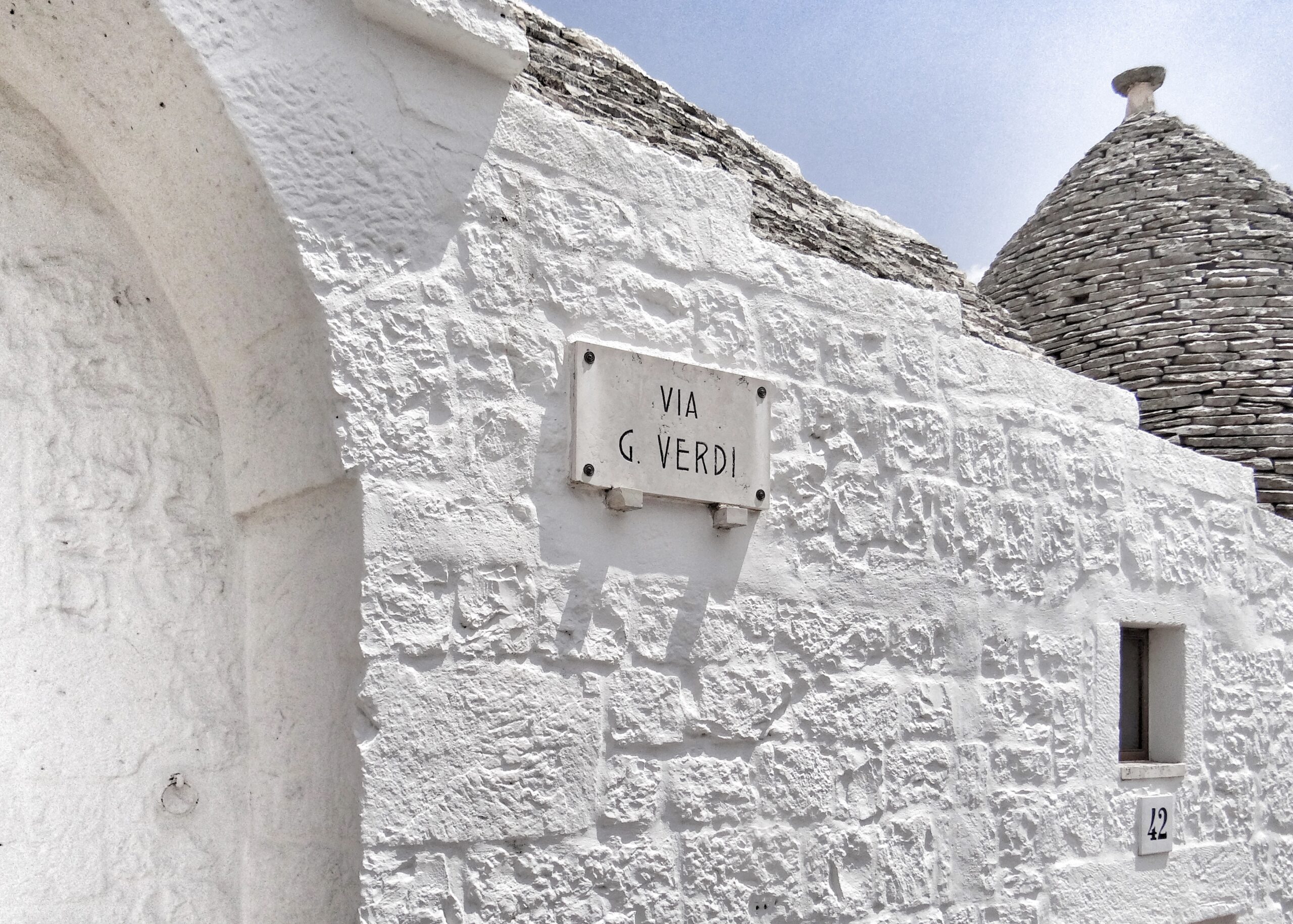






Exploring Alberobello Today
The town’s layout follows its historical growth, with key landmarks along Corso Vittorio Emanuele connecting the Acquaviva Palace, the Church of Saints Cosma and Damiano, and the Aia Piccola and Monti districts—the oldest trulli quarter
Your journey should start at Largo Martellotta. From here, ascend towards Rione Monti, one of the town’s two monumental districts of trulli. Follow Monte Nero and Duca d’Aosta streets until you reach Piazza D’Annunzio, where you can soak in the historic atmosphere before making your way back via Via San Michele or Monte Cucco.
For a more authentic and less commercialised experience, head towards Rione Aia Piccola, a district that has remained largely untouched by tourism. Here, you can admire rows of well-preserved ancient trulli, offering an insight into the traditional rural lifestyle of the region. The area’s small squares and narrow lanes provide the perfect setting for quiet exploration and photography.
Unmissable Historical Landmarks
- Casa D’Amore: Located in Piazza del Popolo, this small but significant house holds a special place in Alberobello’s history, as it was the first building constructed after the town gained independence from feudal rule in 1797.
- Trullo Sovrano: This is the only two-storey trullo in Alberobello and the largest of its kind, showcasing the versatility of traditional dry-stone architecture.
- The Church of the Santi Medici: A late 19th-century church located near some of the oldest trulli settlements, blending Alberobello’s religious and architectural heritage.
- Pezzolla House Complex: A well-preserved group of 18th-century homes that provides a glimpse into the communal lifestyle of Alberobello’s past.
- Chiesa Parrocchiale di Sant'Antonio da Padova: Attractive trullo church.
Exploring the Countryside
Beyond the town, the surrounding countryside is dotted with masserie—traditional fortified farmsteads that offer a taste of Puglia’s rural heritage. Notable sites include Masseria Chistina, San Leonardo, Muscio, and Marraffa. A short drive away, you’ll find Masseria Balsento, home to the historic Church of Barsento (6th century), an ancient monastery that has been modified over the centuries but still retains its fascinating medieval charm.
Where to eat
Avoid eating lunch or dinner in the rione Monti; not because the food will necessarily be bad though it will be busy, catering to the crowds and unlikely to be value for money | avoid restaurants where hot dogs and hamburgers headline the menus | avoid the canteen restaurants with vast dining spaces that cater for the organised bus tours.
Coppino | Largo Martellotta, 48 | “Orecchiette e polpette come Nonna comanda” | small but cute eatery with outside seating offering orecchiette and polpette (meatballs, though you can also buy polpette di pane), just what your grandma ordered! | authentic local dishes using local ingredients served in disposable tubs, a cross between street food and take-away | generous portions, with fresh bread cooked in the oven | very good value at under 10€ per dish | coppino.it | €
Trullo D’Oro |Via Felice Cavallotti 27, 70011 Alberobello | Good traditional dishes using local produce | Finer dining than trattoria style, but not too expensive | info@trullodoro.it | +39 080 432 1820 | €€€
QuantoBasta Pizza & Desert| Piazza XXVII Maggio, 13 | centrally located only minutes from the trulli zone QuantoBasta is a calm oasis with exquisite and reasonably priced pizza | however on the last couple of times we have gone by it has been closed, which may be because it was off season, but could be because it is no longer trading | read our review in full | € - €€
Evo | Via Papa Giovanni XXIII 1 | Evo = evolution, a chic osteria taking a step beyond tradition | try the XXL orecchiette | aubergine (eggplant) dumplings with cinnamon ketchup and gorgonzola dressing | the blood-orange honey-glazed pork bombette | tasting menu available | evoristorante.com | €€€ - €€€€

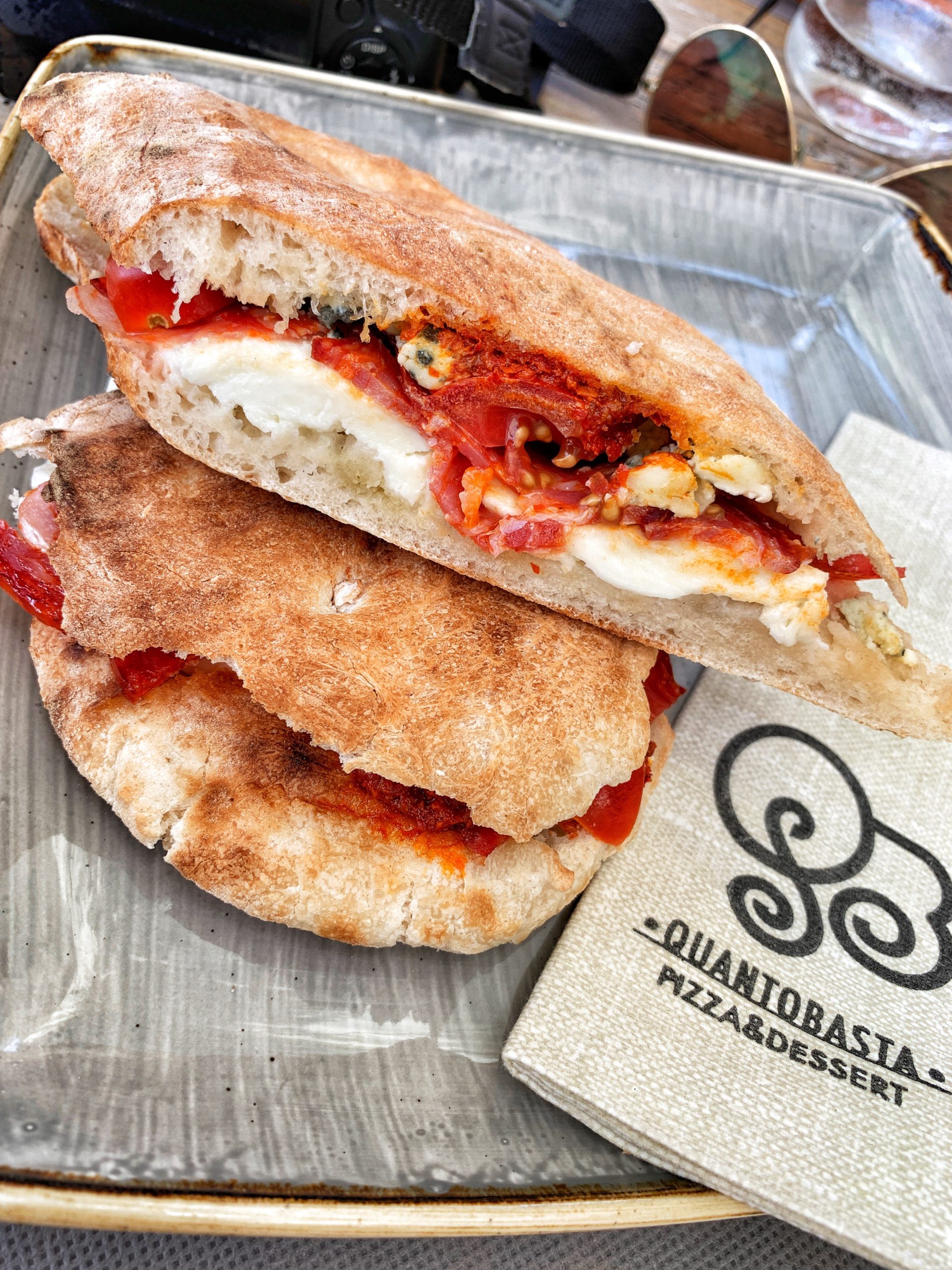
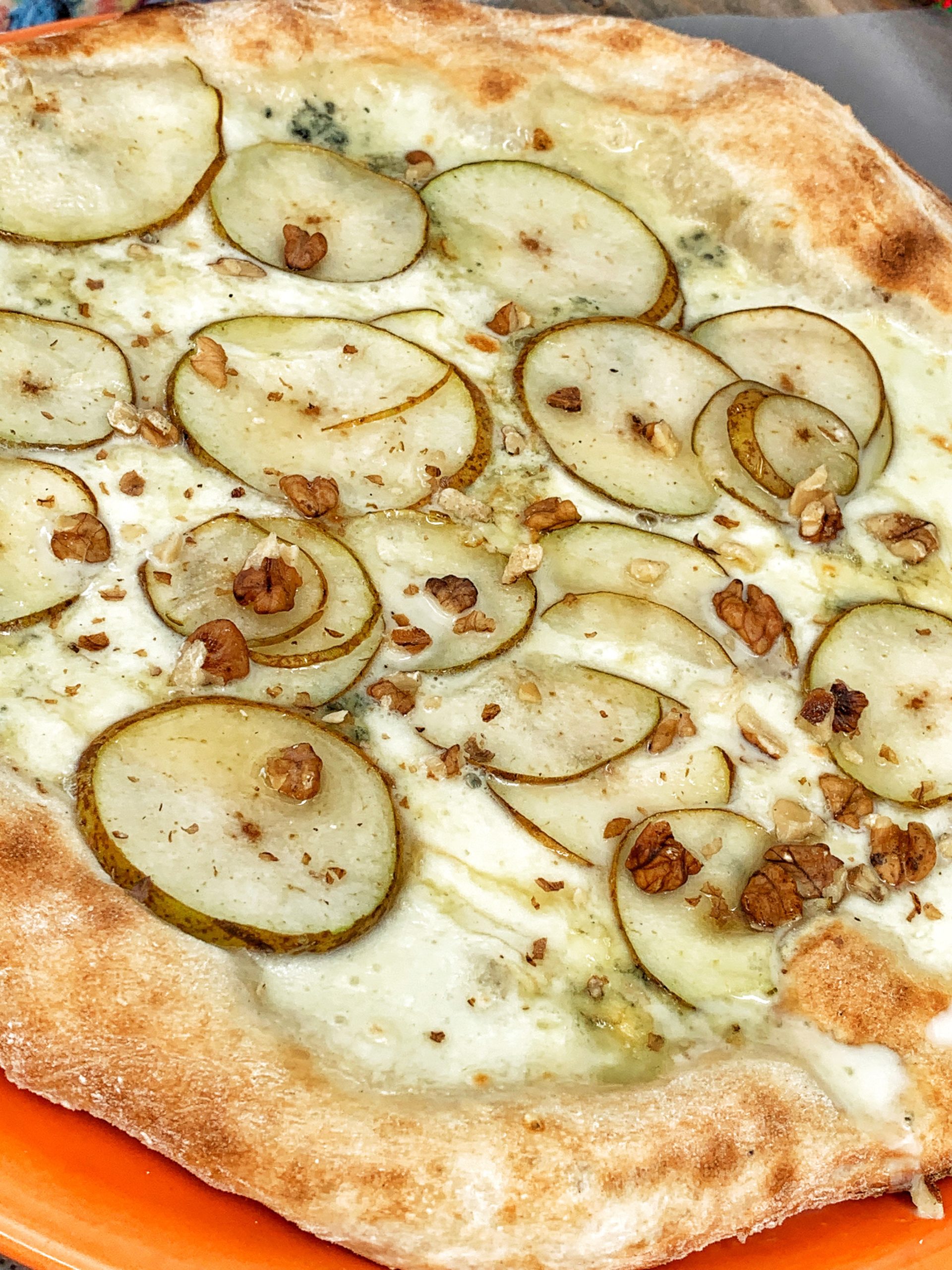
Alternatively | jump in your car and head off to Monopoli. A 35 minute drive, but well worth it. Find a restaurant on the Piazza Giuseppe Garibaldi by the old port and relax with a chilled glass of red wine, well away from the crowds and inflated prices on offer in Alberobello.
How to get there
One of the pleasures of Alberobello is enjoying the drive through the Valle d’Itria getting there, or back.
We have two favourite routes. Enjoy the climb (or descent) coming from (or going to) Monopoli making it feel more than the 20 km / 25 minute drive.
Otherwise the gently undulating drive from Ostuni does the trick. It’s about a 35 km / 40 minutes via Cisternino and Locorotondo. Add 10 minutes driving by Martina Franca. Either way, enjoy the EU infrastructure investment as fresh as the renovated trulli that pass you by.
The public transport network in Puglia is not fully developed. The further away you travel from the stretch of coast between Bari and Lecce the more cumbersome it becomes.
You can take a train from Bari to Alberobello, as well as trains from Brindisi and Lecce using the Ferrovie Sud Est (FSE). There is also a bus from Bari (from just behind the main train station). Beware, there may be connections.
Find out more from our links and information on Puglia’s public transport system and accessible travel in Puglia (which also includes information on the most used Italian apps, with English language options, for using public transport including timetables, ticket pricing and e-booking).





Parking
If you’re arriving by car, park along Via Indipendenza, which has ample parking. Follow the signs to the trulli district where you will find at least three main car parks.
Car park 2 at the (Parcheggio2 Alberobello | Parcheggio Anfiteatro Comunale located at Piazzale Biagio Miraglia) is usually the most convenient. The 2020 rate was 2€ per hour, with a 6€ flat fee for all day parking. The car park is open 24 hours a day. These will usually start filling up at 10am and likely full by 11am.
Alternatively try Alberobello Parcheggio Viale Indipendenza 6, Parcheggio Via Indipendenza 5 ("L'Olmo Bello"), Parcheggio Viale Indipendenza 4 - "Parking Service", Parcheggio Viale Indipendenza 3 - Trulli Parking Area, Parcheggio Via Colombo, Parcheggio Via Indipendenza, Puglia Parking.
From Monopoli | try the Corso Trieste e Trento. Park as close to the top end (towards the Basilica Santuario Parrocchia Santi Medici Cosma e Damiano). It’s pay and display, usually free during afternoon siesta hours, but cheaper than the designated trulli district parking (tip: keep a note of your vehicle registration number; you may need it for the parking ticket). From there its a short walk - less than 10 minutes - down through the Piazza del Popolo to the trulli district.
Alternatively |
From Cisternino | Locorotondo | Martina Franca | the Camper Parking "Nel Verde" Area on Via Cadore charged 5€ for all day car parking (2022 rates). It provides RV parking near the city center. It has electricity but no facilities. 10€ for 6 hrs.

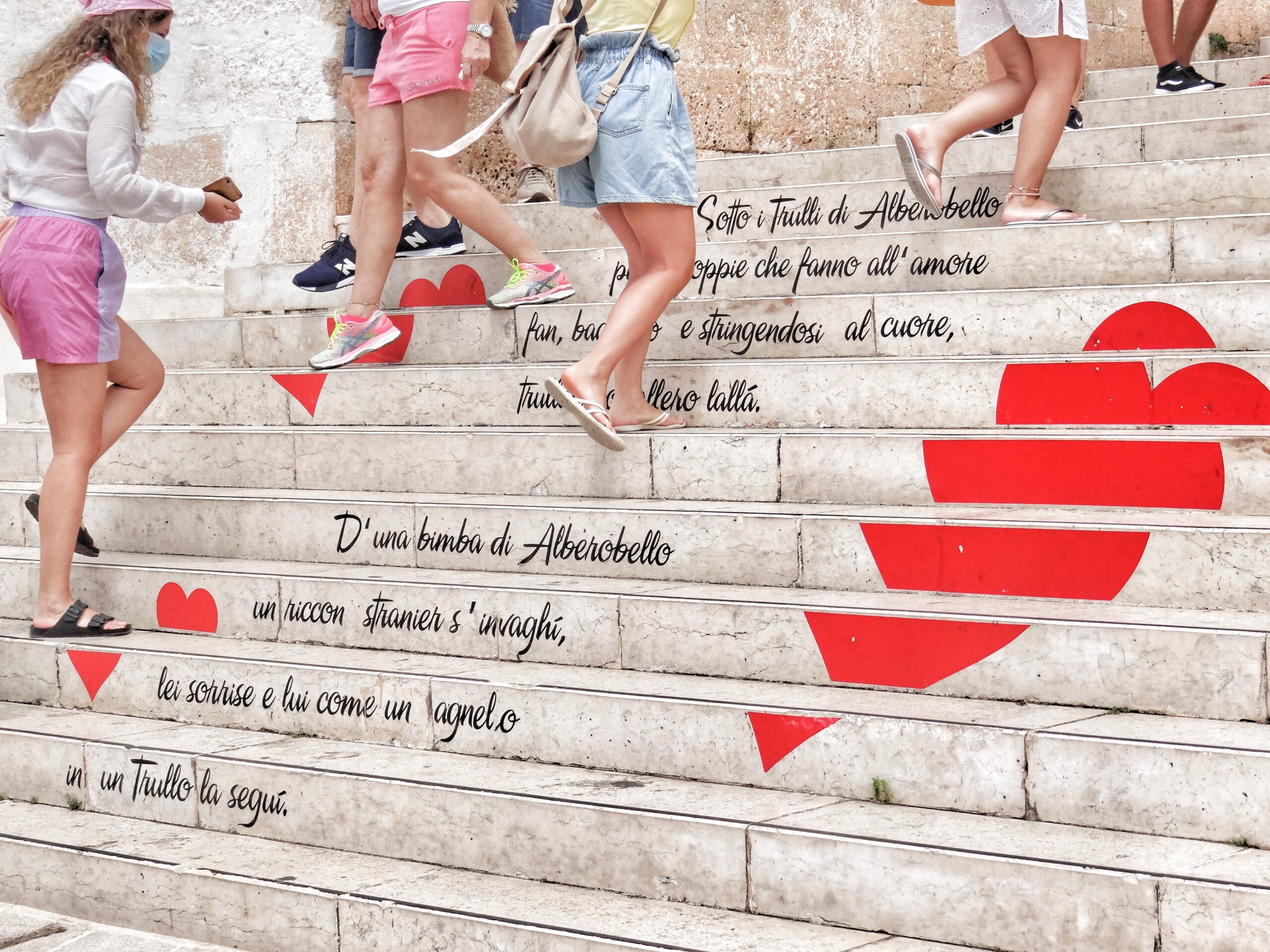
Genesis of the trulli
Tax avoidance.
There are many theories about the origin of the design and the dry stone construction of the trulli. The most popular is that to avoid property taxes the ever resourceful people of Puglia created dry wall buildings so that they could be dismantled when tax collectors were in the area.
Just don’t tell the Guardia di Finanza. Più le cose cambiano, più rimangono le stesse.
Want some moreberobello?
The History of the Trulli
Love Me Trulli | The Story Of Puglia’s Unique Historic Dwellings
If you are looking for a walking tour Mimmo Palmisano is regarded as one of the most knowledgeable guides in the area. We haven’t been on a tour with him yet.
Alberobello 80s style
Episode 7 from the BBC language series, Italianissimo. Shoulder pads optional ..
Trulli Scrumptious
We knew that if we persisted we would eventually find a use for this headline. Gino D’Acampo visits some trulli.

Keep it gay
What? As if Alberobello’s cute little hobbit houses are not camp enough?
